An Explainable Machine Learning-Based Prediction of Backbone Curves for Reduced Beam Section Connections Under Cyclic Loading
Abstract
1. Introduction
1.1. RBS Connections in the Literature
1.2. Use of Machine Learning in Structural Engineering
| Research | Method | Summary | ML/XAI |
|---|---|---|---|
| De Oliveira et al. [28] | ANN, RF, XB, and SVM | Investigated lateral–torsional buckling in steel–concrete composite cellular beams using ML | ML |
| Liu et al. [30] | RFR, SVM, ANN, Linear Regression, and XB | Predicted the bending moment resistance of high-strength steel welded I-section beams | ML |
| Marie et al. [31] | OLS, MARS, SVM, KNN, ANN, and Kernel Regression | Predicted the shear strength of beam–column joints | ML |
| Dabiri et al. [27] | ANN, RF, and RR | Predicted the displacement ductility ratio of RC beam–column joints | ML |
| Almasabha et al. [25] | LightGBM, XB, and ANN. | Predicted the shear strength of short links | ML |
| Dissanayake et al. [29] | SVR, MLP, GBR, and XB | Predicted the shear capacity of both stainless-steel lipped channel sections and carbon steel LiteSteel sections | ML |
| Avci-Karatas [26] | MPMR and EML | Predicted the shear capacity of headed shear steel studs in steel–concrete composite structures | ML |
| Horton et al. [33] | Deep Learning | Determined the parameters required for the modified Ibarra–Krawinkler (mIK) hysteretic model | ML |
| Mangalathu et al. [38] | RF | Predicted the failure modes of reinforced concrete (RC) columns and shear walls | XAI |
| Wakjira et al. [39] | RF, GB, XGB, DT, and SVM | Found the most significant parameters affecting the Plastic Hinge Length (PHL) of rectangular RC columns | XAI |
| Angelucci et al. [40] | GPR | Predicted displacement demand in RC buildings under pulse-like earthquakes | XAI |
| Zhu et al. [41] | ANN, SVR, DT, RF, AB, GB, and XB | Predicted the shear bearing capacity of a fiber-reinforced polymer (FRP)–concrete interface | XAI |
| Shahmansouri et al. [42] | ANN | Predicted the lateral response of post-tensioned walls | ML/XAI |
| This study | ANN, RF, SVM, GB, and RR | Predicted the moment–rotation backbone curves of RBS connections and analyzed feature effects using XAI | ML/XAI |
1.3. Research Gap
2. Development of FE Model
Generation of RBS Connection Database via FE Model
3. Methodology
- X: the original data point.
- Xmin: the minimum value in the feature (column).
- Xmax: the maximum value in the feature (column).
- Xscaled: the scaled value of X.
- rmin: the desired minimum range of the transformed data (default is 0).
- rmax: the desired maximum range of the transformed data (default is 0).
- is the weight update.
- is the learning rate.
- is the gradient loss function with respect to the weights.
- Root Mean Squared Error (RMSE): This metric checks the standard deviation of prediction errors.
- Mean Absolute Error (MAE): This metric measures the average magnitude of prediction errors.
- R-squared (R2): This metric measures the variance within the model for the desired output.
- Explained Variance Score: This metric measures the extent to which the developed model captures data variability.
- : actual value.
- : predicted value.
- : mean.
- : number of observations.
- : variance of predictions.
- : variance of actual results.
- N is the set of all structural elements.
- v(S) is a system performance function (dependent variable) for a subset S of elements.
- The Shapley value for an element i is given by Equation (7) [59].
- S represents a subset of structural elements excluding element i.
- quantifies the marginal contribution of element i to system performance.
- The weighting factor ensures that the contribution is averaged over all possible permutations of element additions.
4. Results and Discussion
- Material strength parameters (Yield_web and Yield_flange) demonstrated a negligible correlation (r = 0.1073), suggesting that variations in steel strength did not significantly influence connection behavior within this dataset.
- Flange thickness (tf) and width (bf) exhibited weak positive correlations (r = 0.2457 and 0.1992, respectively), indicating only marginal improvements in performance with increased dimensions.
- Beam depth “d” showed the strongest influence among geometric parameters (r = 0.3142), implying that deeper sections provide enhanced bending resistance in RBS connections.
- Among RBS cut parameters, variable b (r = 0.3004) displayed the most substantial correlation, likely reflecting the importance of reduced section length in controlling connection behavior.
- Among all RBS cut parameters, the maximum r obtained is 0.3142, which indicates a weak linear relationship between corresponding variables. This also indicates a low possibility of multicollinearity since the Pearson correlation coefficient can also be used as an indicator of multicollinearity [49].
- 1
- Accelerating the design process through rapid performance predictions, particularly for
- Code compliance checks (e.g., AISC358-22 rotation limits).
- Parametric studies optimizing RBS cut dimensions (a, b, c).
- 2
- Enabling the optimization of critical parameters such as beam depth and RBS cut length.
- 3
- Potentially reducing material costs through more efficient designs.
- 4
- The tight error envelope (±500 kN-m at extremes) supports its use in reliability-based design, where quantifying uncertainty is essential.
5. Conclusions
Author Contributions
Funding
Data Availability Statement
Conflicts of Interest
References
- Federal Emergency Management Agency. A Policy Guide to Steel Moment-Frame Construction (FEMA 354). SAC Joint Venture. 2000. Available online: https://www.nehrp.gov/pdf/fema354.pdf (accessed on 10 May 2025).
- Roeder, C.W.; Venture, S.A.C.J. State of the Art Report on Connection Performance. Federal Emergency Management Agency (FEMA) Bulletin, (355D). 2000. Available online: https://www.nehrp.gov/pdf/fema355d.pdf (accessed on 2 June 2025).
- Engelhardt, M.D.; Sabol, T.A. Seismic-resistant steel moment connections: Developments since the 1994 Northridge earthquake. Prog. Struct. Eng. Mater. 1997, 1, 68–77. [Google Scholar] [CrossRef]
- Uang, C.-M.; Yu, Q.-S.; Kent, Y.; Noel, S.; Gross, J. Cyclic Testing of Steel Moment Connections Rehabilitated with RBS or Welded Haunch. J. Struct. Eng. 2000, 126, 57–68. [Google Scholar] [CrossRef]
- Chen, S.-J.; Chao, Y.C. Effect of composite action on seismic performance of steel moment connections with reduced beam sections. J. Constr. Steel Res. 2001, 57, 417–434. [Google Scholar] [CrossRef]
- Gilton, C.S.; Uang, C.-M. Cyclic Response and Design Recommendations of Weak-Axis Reduced Beam Section Moment Connections. J. Struct. Eng. 2002, 128, 452–463. [Google Scholar] [CrossRef]
- Lee, C.-H.; Jeon, S.-W.; Kim, J.-H.; Uang, C.-M. Effects of Panel Zone Strength and Beam Web Connection Method on Seismic Performance of Reduced Beam Section Steel Moment Connections. J. Struct. Eng. 2005, 131, 1854–1865. [Google Scholar] [CrossRef]
- Lee, C.-H.; Kim, J.-H. Seismic design of reduced beam section steel moment connections with bolted web attachment. J. Constr. Steel Res. 2007, 63, 522–531. [Google Scholar] [CrossRef]
- Pachoumis, D.T.; Galoussis, E.G.; Kalfas, C.N.; Christitsas, A.D. Reduced beam section moment connections subjected to cyclic loading: Experimental analysis and FEM simulation. Eng. Struct. 2009, 31, 216–223. [Google Scholar] [CrossRef]
- Ohsaki, M.; Tagawa, H.; Pan, P. Shape optimization of reduced beam section under cyclic loads. J. Constr. Steel Res. 2009, 65, 1511–1519. [Google Scholar] [CrossRef]
- Pachoumis, D.T.; Galoussis, E.G.; Kalfas, C.N.; Efthimiou, I.Z. Cyclic performance of steel moment-resisting connections with reduced beam sections—Experimental analysis and finite element model simulation. Eng. Struct. 2010, 32, 2683–2692. [Google Scholar] [CrossRef]
- Han, S.W.; Moon, K.-H.; Hwang, S.-H.; Stojadinovic, B. Rotation capacities of reduced beam section with bolted web (RBS-B) connections. J. Constr. Steel Res. 2012, 70, 256–263. [Google Scholar] [CrossRef]
- American Institute of Steel Construction. AISC 358-16: Seismic Provisions for Structural Steel Buildings; American Institute of Steel Construction: Chicago, IL, USA, 2016. [Google Scholar]
- Sofias, C.E.; Kalfas, C.N.; Pachoumis, D.T. Experimental and FEM analysis of reduced beam section moment endplate connections under cyclic loading. Eng. Struct. 2014, 59, 320–329. [Google Scholar] [CrossRef]
- Oh, K.; Lee, K.; Chen, L.; Hong, S.-B.; Yang, Y. Seismic performance evaluation of weak axis column-tree moment connections with reduced beam section. J. Constr. Steel Res. 2015, 105, 28–38. [Google Scholar] [CrossRef]
- Li, R.; Samali, B.; Tao, Z.; Kamrul Hassan, M. Cyclic behaviour of composite joints with reduced beam sections. Eng. Struct. 2017, 136, 329–344. [Google Scholar] [CrossRef]
- Morshedi, M.A.; Dolatshahi, K.M.; Maleki, S. Double reduced beam section connection. J. Constr. Steel Res. 2017, 138, 283–297. [Google Scholar] [CrossRef]
- Sophianopoulos, D.S.; Deri, A.E. Steel beam-to-column RBS connections with European profiles: I. Static optimization. J. Constr. Steel Res. 2017, 139, 101–109. [Google Scholar] [CrossRef]
- Liu, C.; Wu, J.; Xie, L. Seismic performance of buckling-restrained reduced beam section connection for steel frames. J. Constr. Steel Res. 2021, 181, 106622. [Google Scholar] [CrossRef]
- Horton, T.A.; Hajirasouliha, I.; Davison, B.; Ozdemir, Z. More efficient design of reduced beam sections (RBS) for maximum seismic performance. J. Constr. Steel Res. 2021, 183, 106728. [Google Scholar] [CrossRef]
- Horton, T.A.; Hajirasouliha, I.; Davison, B.; Ozdemir, Z.; Abuzayed, I. Development of more accurate cyclic hysteretic models to represent RBS connections. Eng. Struct. 2021, 245, 112899. [Google Scholar] [CrossRef]
- Özkılıç, Y.O.; Bozkurt, M.B. Numerical validation on novel replaceable reduced beam section connections for moment-resisting frames. Structures 2023, 50, 63–79. [Google Scholar] [CrossRef]
- Yao, Y.; Zhou, L.; Huang, H.; Chen, Z.; Ye, Y. Cyclic performance of novel composite beam-to-column connections with reduced beam section fuse elements. Structures 2023, 50, 842–858. [Google Scholar] [CrossRef]
- Thai, H.-T. Machine learning for structural engineering: A state-of-the-art review. Structures 2022, 38, 448–491. [Google Scholar] [CrossRef]
- Almasabha, G.; Alshboul, O.; Shehadeh, A.; Almuflih, A.S. Machine Learning Algorithm for Shear Strength Prediction of Short Links for Steel Buildings. Buildings 2022, 12, 775. [Google Scholar] [CrossRef]
- Avci-Karatas, C. Application of Machine Learning in Prediction of Shear Capacity of Headed Steel Studs in Steel–Concrete Composite Structures. Int. J. Steel Struct. 2022, 22, 539–556. [Google Scholar] [CrossRef]
- Dabiri, H.; Rahimzadeh, K.; Kheyroddin, A. A comparison of machine learning- and regression-based models for predicting ductility ratio of RC beam-column joints. Structures 2022, 37, 69–81. [Google Scholar] [CrossRef]
- De Oliveira, V.M.; De Carvalho, A.S.; Rossi, A.; Hosseinpour, M.; Sharifi, Y.; Martins, C.H. Data-driven design approach for the lateral-distortional buckling in steel-concrete composite cellular beams using machine learning models. Structures 2024, 61, 106018. [Google Scholar] [CrossRef]
- Dissanayake, M.; Nguyen, H.; Poologanathan, K.; Perampalam, G.; Upasiri, I.; Rajanayagam, H.; Suntharalingam, T. Prediction of shear capacity of steel channel sections using machine learning algorithms. Thin-Walled Struct. 2022, 175, 109152. [Google Scholar] [CrossRef]
- Liu, J.; Li, S.; Guo, J.; Xue, S.; Chen, S.; Wang, L.; Zhou, Y.; Luo, T.X. Machine learning (ML) based models for predicting the ultimate bending moment resistance of high strength steel welded I-section beam under bending. Thin-Walled Struct. 2023, 191, 111051. [Google Scholar] [CrossRef]
- Marie, H.S.; Abu El-Hassan, K.; Almetwally, E.M.; A. El-Mandouh, M. Joint shear strength prediction of beam-column connections using machine learning via experimental results. Case Stud. Constr. Mater. 2022, 17, e01463. [Google Scholar] [CrossRef]
- Rahman, J.; Ahmed, K.S.; Khan, N.I.; Islam, K.; Mangalathu, S. Data-driven shear strength prediction of steel fiber reinforced concrete beams using machine learning approach. Eng. Struct. 2021, 233, 111743. [Google Scholar] [CrossRef]
- Horton, T.A.; Hajirasouliha, I.; Davison, B.; Ozdemir, Z. Accurate prediction of cyclic hysteresis behaviour of RBS connections using Deep Learning Neural Networks. Eng. Struct. 2021, 247, 113156. [Google Scholar] [CrossRef]
- Guzmán-Torres, J.A.; Domínguez-Mota, F.J.; Martínez-Molina, W.; Naser, M.Z.; Tinoco-Guerrero, G.; Tinoco-Ruíz, J.G. Damage detection on steel-reinforced concrete produced by corrosion via YOLOv3: A detailed guide. Front. Built Environ. 2023, 9, 1144606. [Google Scholar] [CrossRef]
- Hsiao, C.-H.; Kumar, K.; Rathje, E. Explainable AI models for predicting liquefaction-induced lateral spreading (Version 1). arXiv 2024. [Google Scholar] [CrossRef]
- Janouskova, K.; Rigotti, M.; Giurgiu, I.; Malossi, C. Model-Assisted Labeling via Explainability for Visual Inspection of Civil Infrastructures (No. arXiv:2209.11159). arXiv 2022. [Google Scholar] [CrossRef]
- Zhang, T.; Vaccaro, M.; Zaghi, A.E. Application of neural networks to the prediction of the compressive capacity of corroded steel plates. Front. Built Environ. 2023, 9, 1156760. [Google Scholar] [CrossRef]
- Mangalathu, S.; Hwang, S.-H.; Jeon, J.-S. Failure mode and effects analysis of RC members based on machine-learning-based SHapley Additive exPlanations (SHAP) approach. Eng. Struct. 2020, 219, 110927. [Google Scholar] [CrossRef]
- Wakjira, T.G. Plastic hinge length of rectangular RC columns using ensemble machine learning model. Eng. Struct. 2021, 244, 112808. [Google Scholar] [CrossRef]
- Angelucci, G.; Quaranta, G.; Mollaioli, F.; Kunnath, S.K. Interpretable machine learning models for displacement demand prediction in reinforced concrete buildings under pulse-like earthquakes. J. Build. Eng. 2024, 95, 110124. [Google Scholar] [CrossRef]
- Zhu, Y.; Taffese, W.Z.; Chen, G. Enhancing FRP-concrete interface bearing capacity prediction with explainable machine learning: A feature engineering approach and SHAP analysis. Eng. Struct. 2024, 319, 118831. [Google Scholar] [CrossRef]
- Shahmansouri, A.A.; Jafari, A.; Bengar, H.A.; Zhou, Y.; Taciroglu, E. A scaling-based generalizable integrated ML-mechanics model for lateral response of self-centering walls. Eng. Struct. 2025, 336, 120326. [Google Scholar] [CrossRef]
- Fryer, D.; Strümke, I.; Nguyen, H. Shapley values for feature selection: The good, the bad, and the axioms. IEEE Access 2021, 9, 144352–144360. [Google Scholar] [CrossRef]
- American Institute of Steel Construction. AISC 358-22: Prequalified Connections for Special and Intermediate Steel Moment Frames for Seismic Applications; American Institute of Steel Construction: Chicago, IL, USA, 2022. [Google Scholar]
- Dassault Systèmes Simulia Corp. ABAQUS User’s, Theory, and Scripting Manuals; Dassault Systèmes: Johnston, RI, USA, 2024. [Google Scholar]
- Saneei Nia, Z.; Ghassemieh, M.; Mazroi, A. WUF-W connection performance to box column subjected to uniaxial and biaxial loading. J. Constr. Steel Res. 2013, 88, 90–108. [Google Scholar] [CrossRef]
- Asil Gharebaghi, S.; Fami Tafreshi, R.; Fanaie, N.; Sepasgozar Sarkhosh, O. Optimization of the Double Reduced Beam Section (DRBS) Connection. Int. J. Steel Struct. 2021, 21, 1346–1369. [Google Scholar] [CrossRef]
- Chen, F.; Liu, X.; Zhang, H.; Luo, Y.; Lu, N.; Liu, Y.; Xiao, X. Assessment of fatigue crack propagation and lifetime of double-sided U-rib welds considering welding residual stress relaxation. Ocean. Eng. 2025, 332, 121400. [Google Scholar] [CrossRef]
- Shrestha, N. Detecting multicollinearity in regression analysis. Am. J. Appl. Math. Stat. 2020, 8, 39–42. [Google Scholar] [CrossRef]
- Mining, W.I.D. Data mining: Concepts and techniques. Morgan Kaufinann 2006, 10, 4. [Google Scholar]
- Nielsen, M.A. Neural Networks and Deep Learning; Determination Press: San Francisco, CA, USA, 2015; Volume 25. [Google Scholar]
- Goodfellow, I.; Bengio, Y.; Courville, A.; Bengio, Y. Deep Learning; MIT Press: Cambridge, UK, 2016; Volume 1. [Google Scholar]
- Pedregosa, F.; Varoquaux, G.; Gramfort, A.; Michel, V.; Thirion, B.; Grisel, O.; Blondel, M.; Prettenhofer, P.; Weiss, R.; Dubourg, V. Scikit-learn: Machine learning in Python. J. Mach. Learn. Res. 2011, 12, 2825–2830. [Google Scholar]
- Sonmez, R.; Uysal, F. Discussion of “Artificial Intelligence and Parametric Construction Cost Estimate Modeling: State-of-the-Art Review” by Haytham H. Elmousalami. J. Constr. Eng. Manag. 2021, 147, 07021001. [Google Scholar] [CrossRef]
- Hart, S. Shapley Value. In Game Theory (210–216); Springer: Berlin/Heidelberg, Germany, 1989. [Google Scholar]
- Cicek, E.; Akin, M.; Uysal, F.; Topcu Aytas, R. Comparison of traffic accident injury severity prediction models with explainable machine learning. Transp. Lett. 2023, 15, 1043–1054. [Google Scholar] [CrossRef]
- Li, X.; Zhou, Y.; Dvornek, N.C.; Gu, Y.; Ventola, P.; Duncan, J.S. Efficient Shapley explanation for features importance estimation under uncertainty. In Proceedings of the Medical Image Computing and Computer Assisted Intervention–MICCAI 2020: 23rd International Conference, Lima, Peru, 4–8 October 2020; Proceedings, Part I 23. Springer International Publishing: Cham, Switzerland, 2020; pp. 792–801. [Google Scholar]
- Movsessian, A.; Cava, D.G.; Tcherniak, D. Interpretable Machine Learning in Damage Detection Using Shapley Additive Explanations. ASCE-ASME J. Risk Uncertain. Eng. Syst. Part B Mech. Eng. 2022, 8, 021101. [Google Scholar] [CrossRef]
- Shapley, L.S. Stochastic Games. Proc. Natl. Acad. Sci. USA 1953, 39, 1095–1100. [Google Scholar] [CrossRef]
- Al-Saeedi, S.M.A.A.; Lu, L.; Al-Ansi, O.Z.Y.; Ali, S. Hysteretic Behavior Study on the RBS Connection of H-Shape Columns with Middle-Flanges or Wide-Flange H-Shape Beams. Buildings 2025, 15, 147. [Google Scholar] [CrossRef]
- Al-Massri, G.; Ghanem, H.; Khatib, J.; El-Zahab, S.; Elkordi, A. The Effect of Adding Banana Fibers on the Physical and Mechanical Properties of Mortar for Paving Block Applications. Ceramics 2024, 7, 1533–1553. [Google Scholar] [CrossRef]
- El-Mir, A.; El-Zahab, S. Assessment of the Compressive Strength of Self-Consolidating Concrete Subjected to Freeze-Thaw Cycles Using Ultrasonic Pulse Velocity Method. Russ. J. Nondestruct. Test. 2022, 58, 108–117. [Google Scholar] [CrossRef]
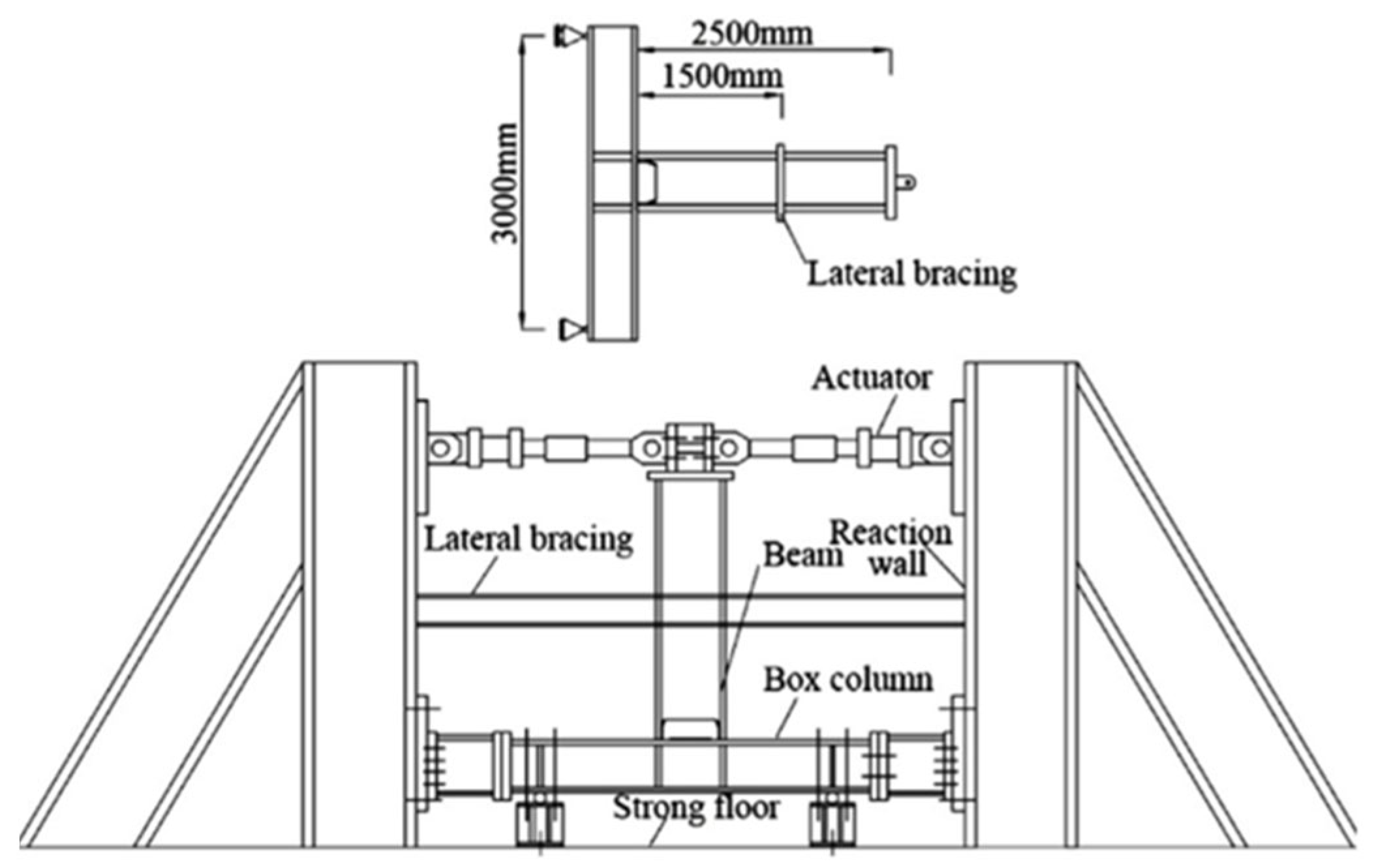
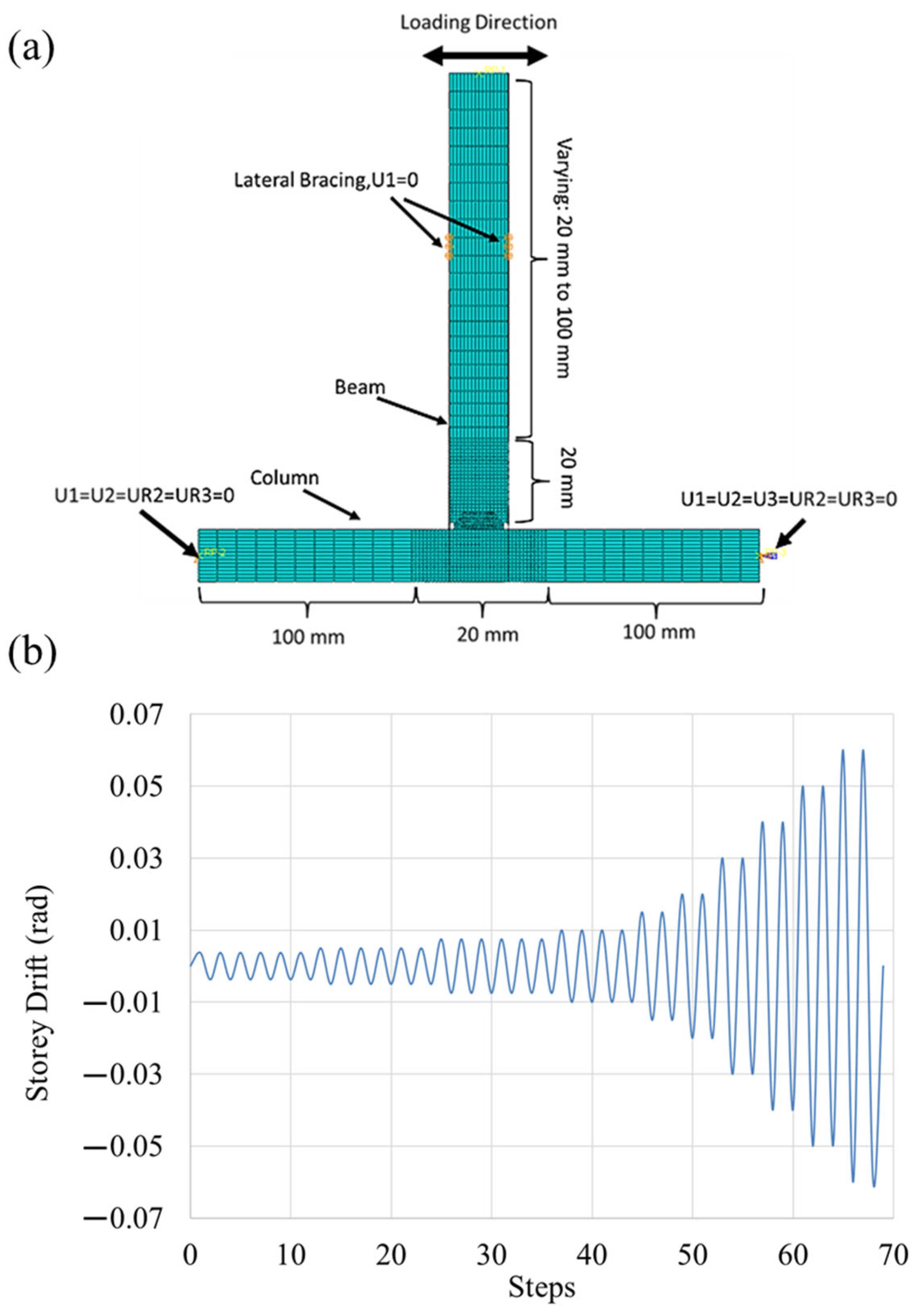

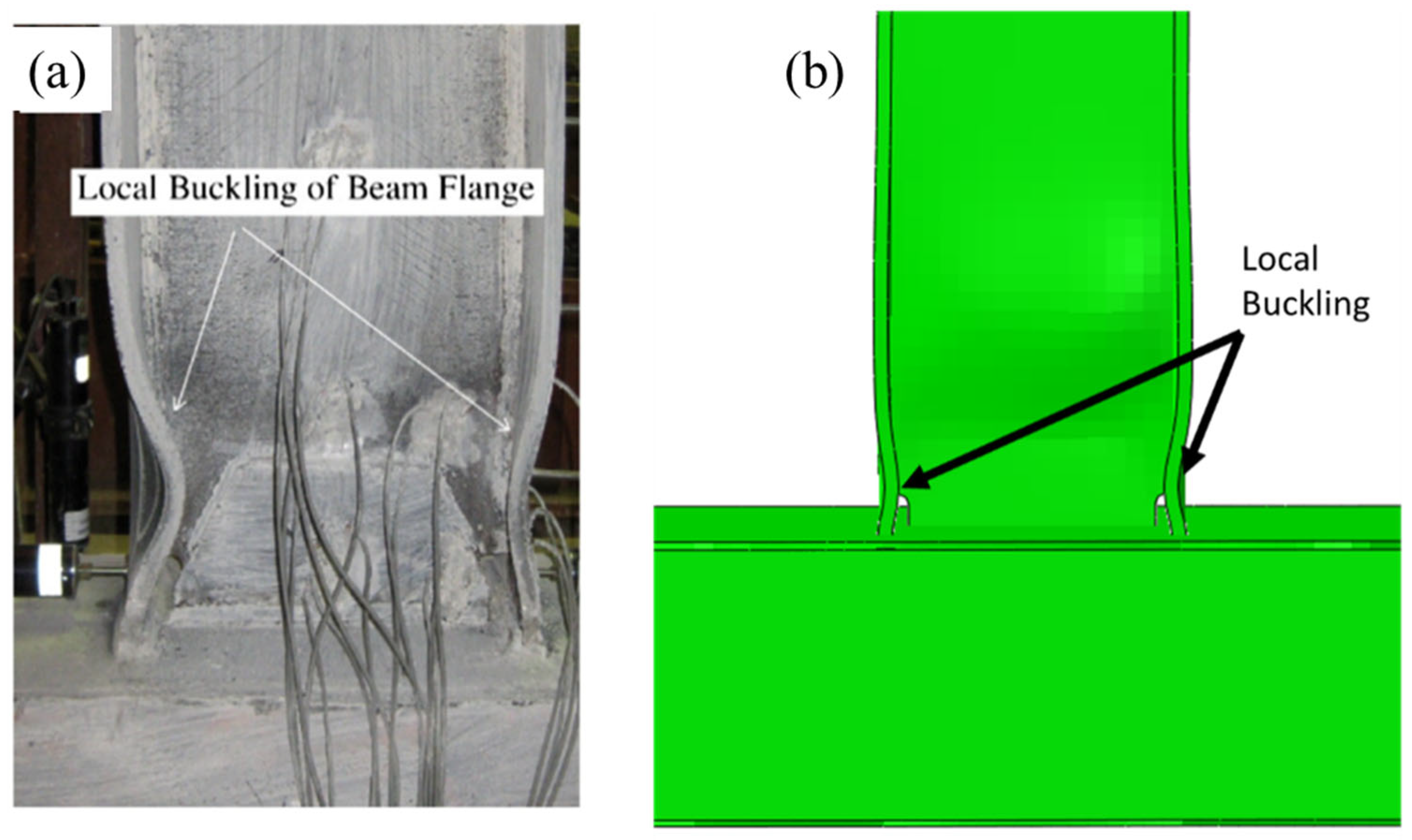
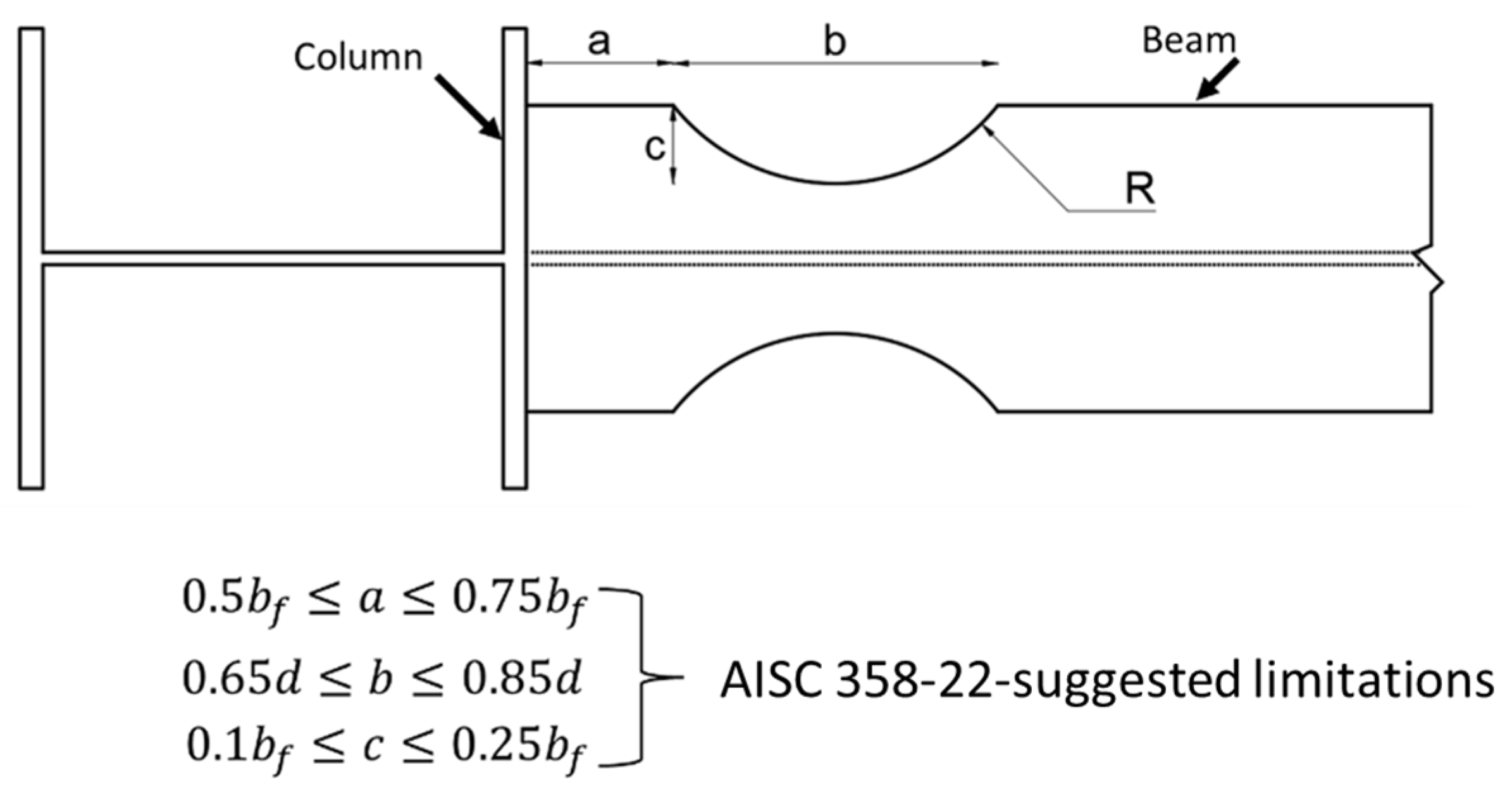
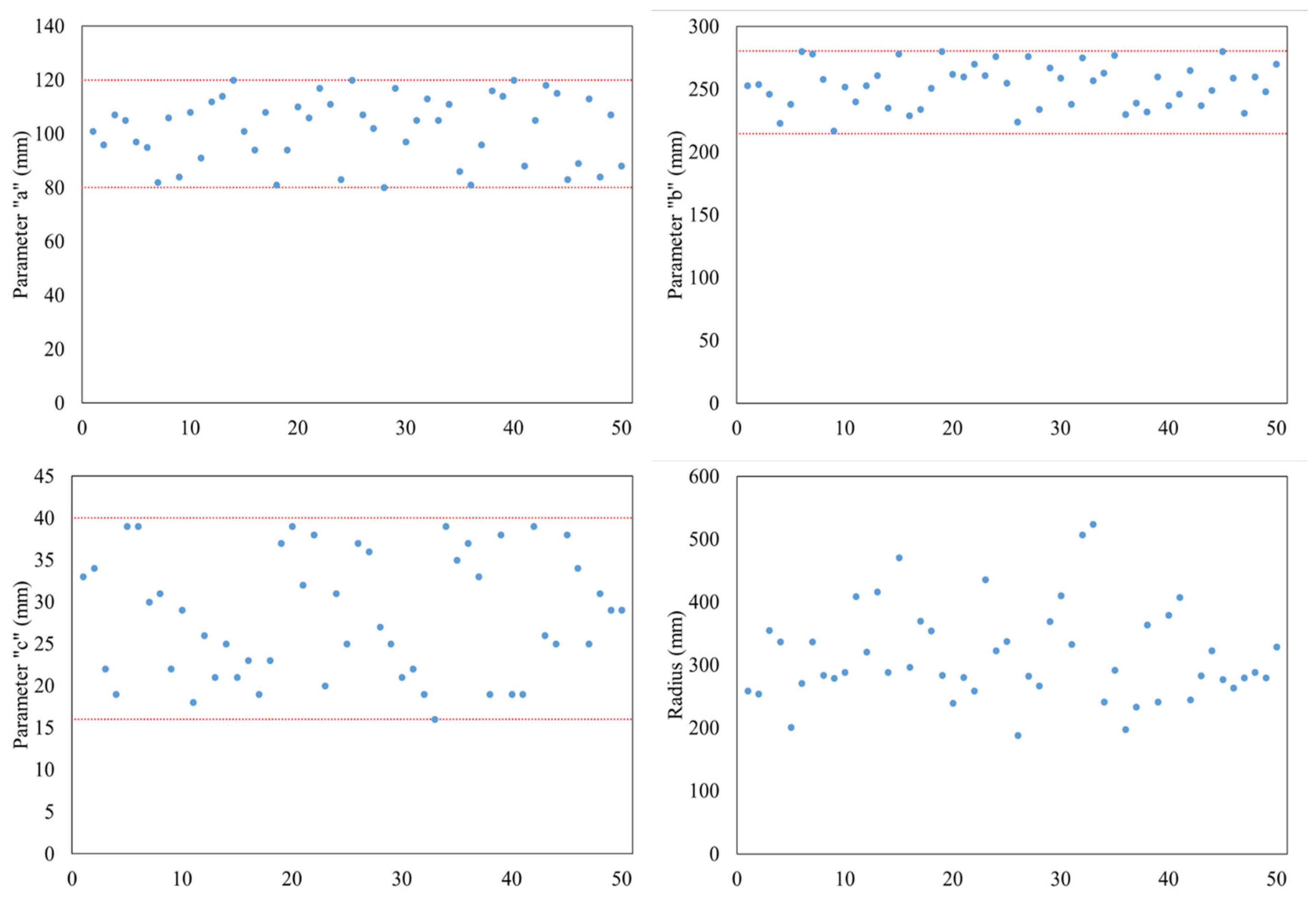
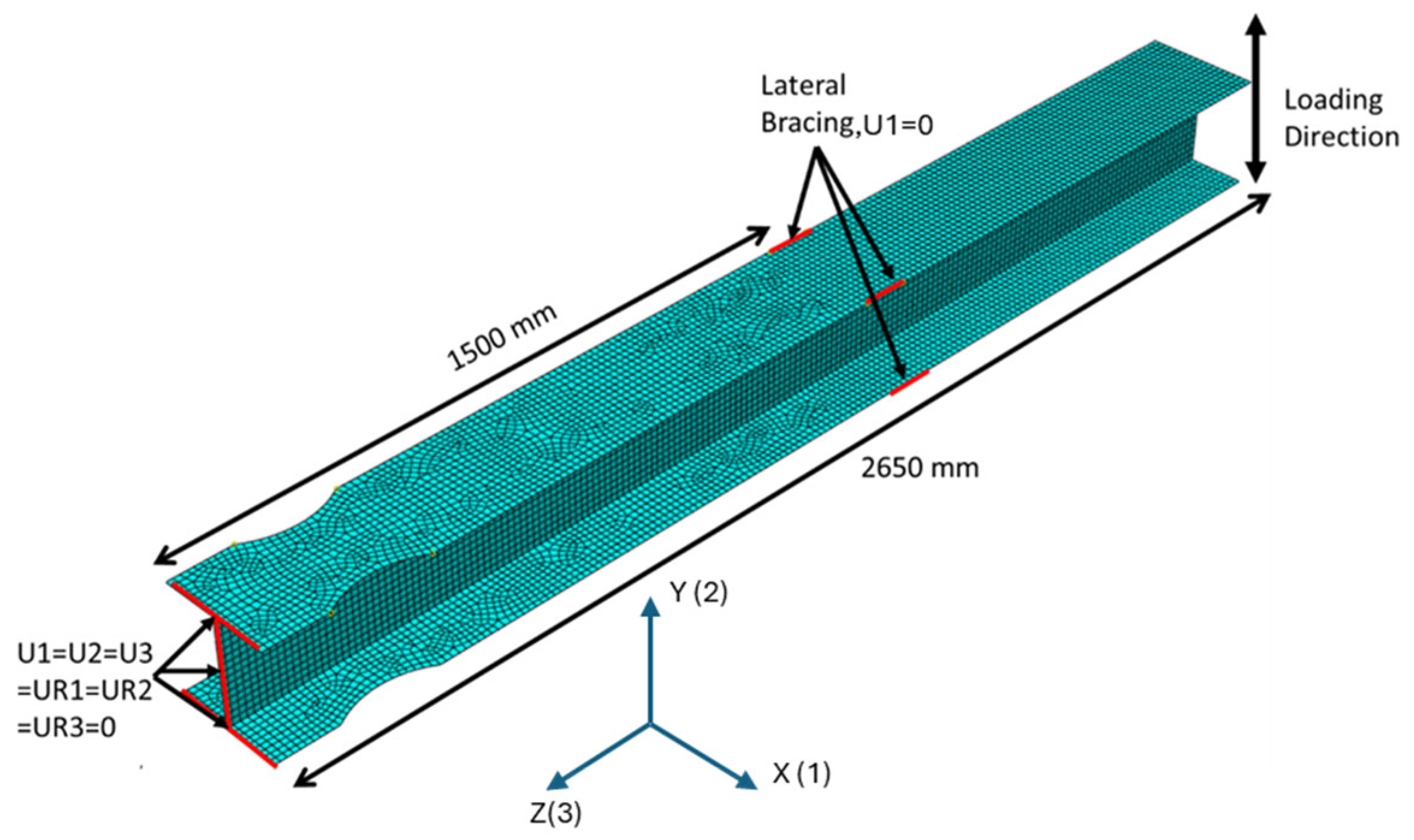



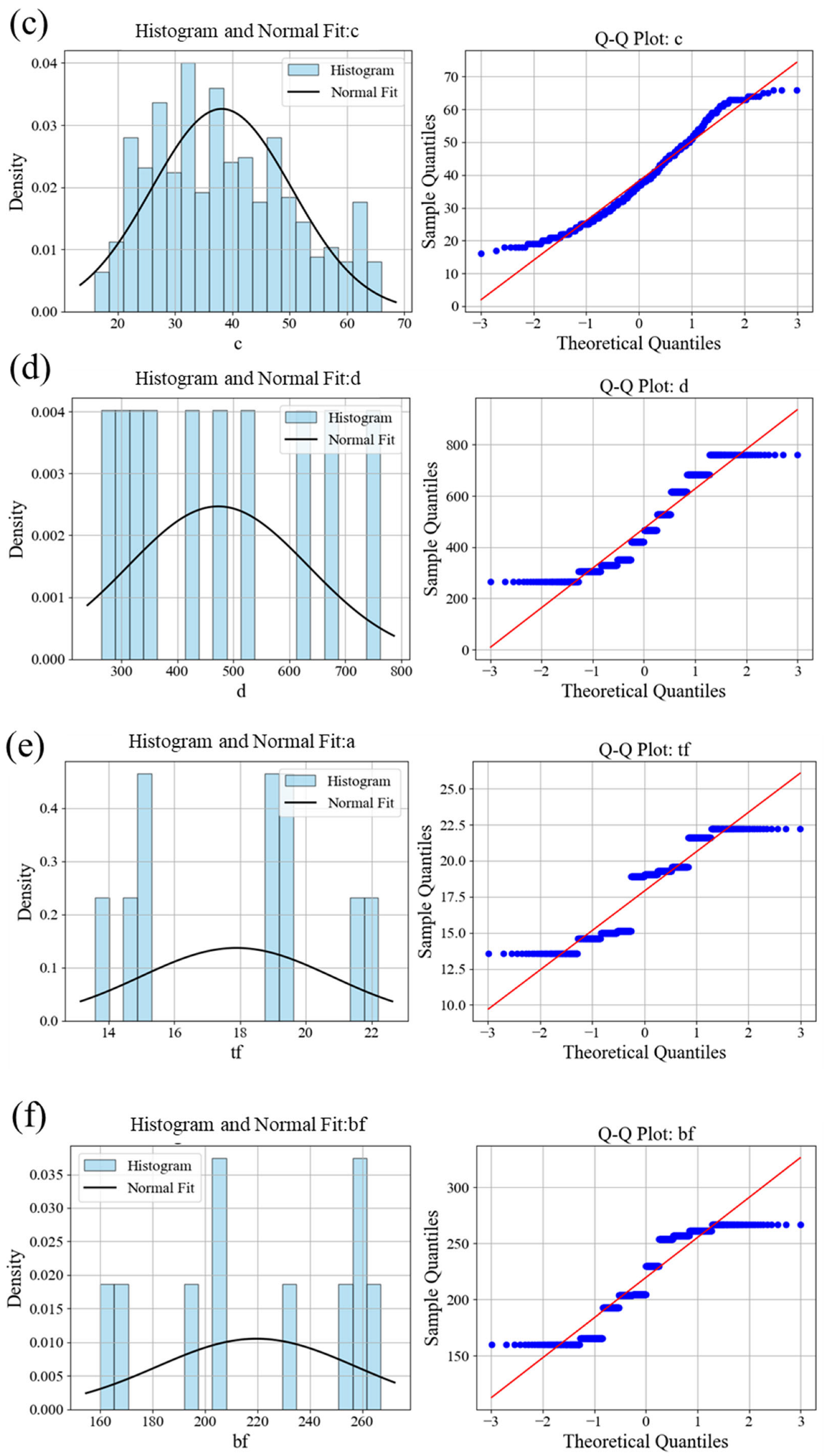
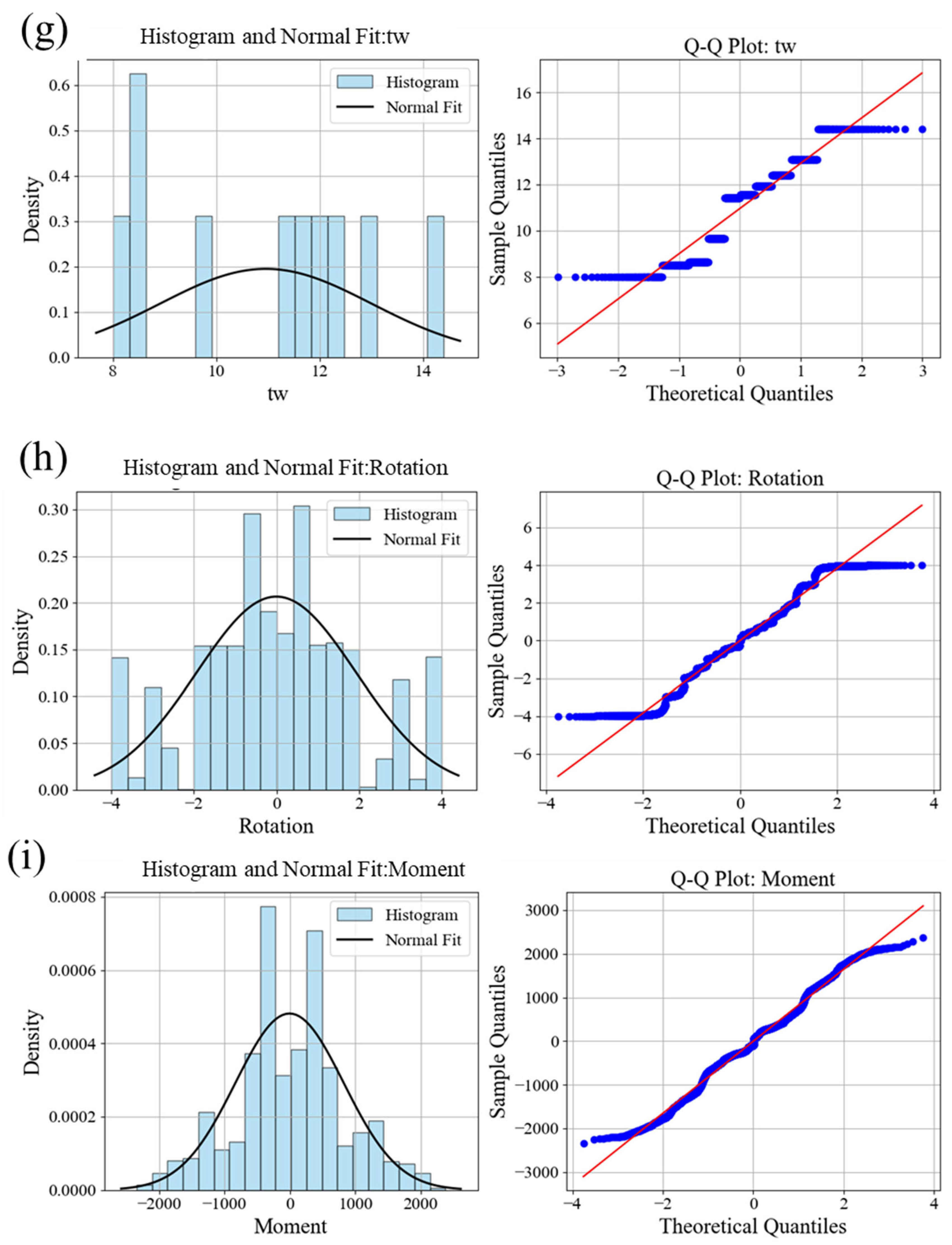
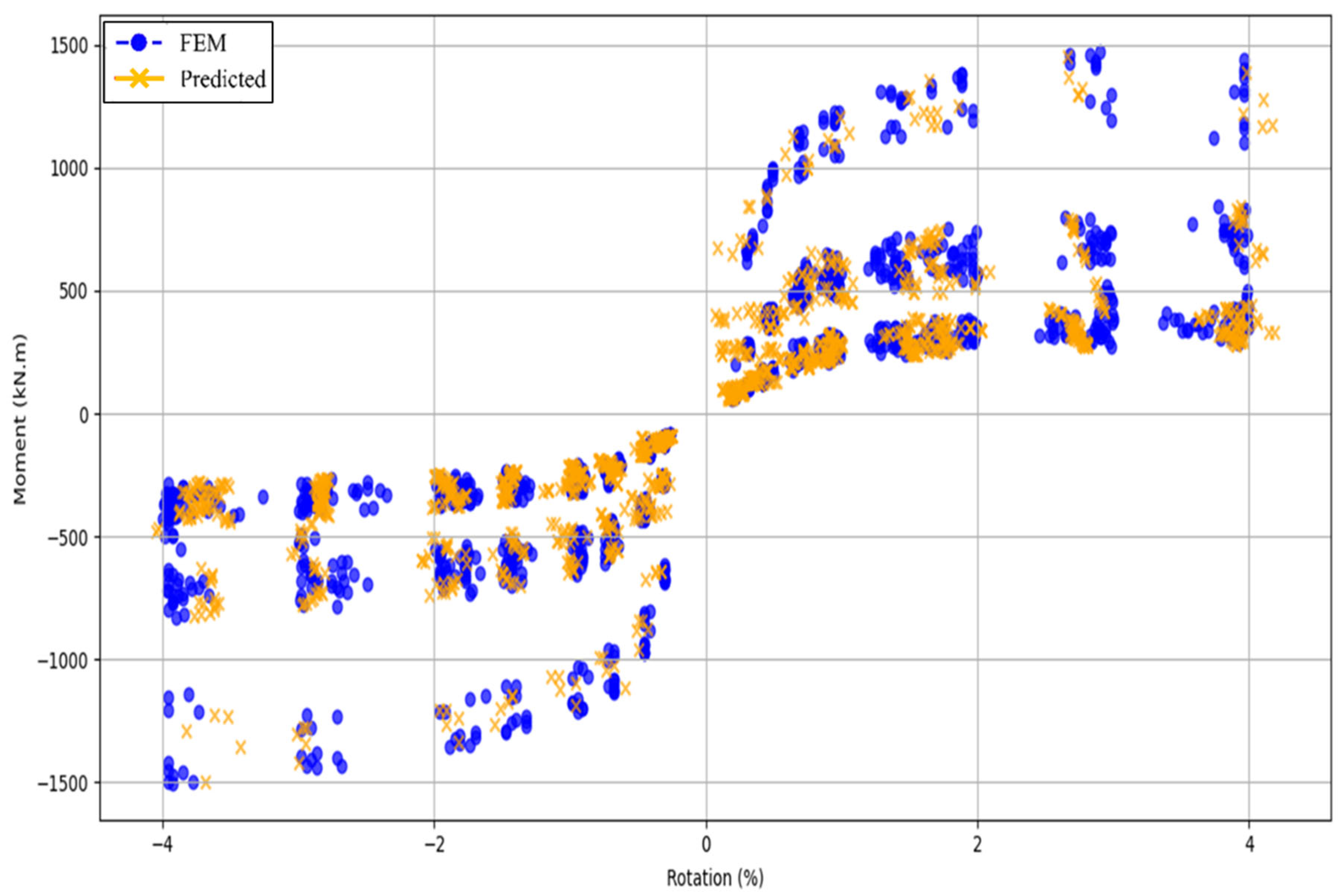

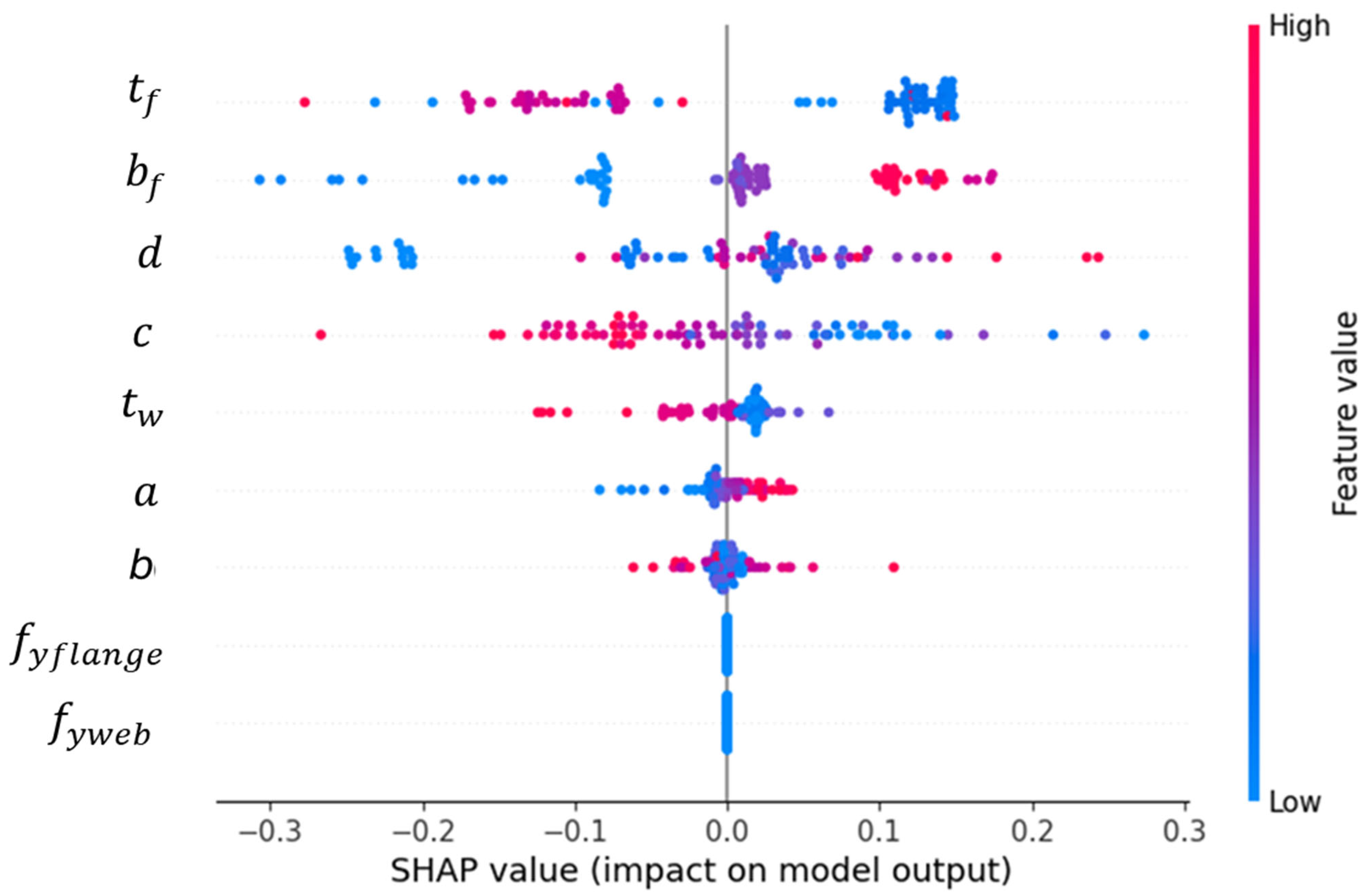
| Research | Method * | Summary |
|---|---|---|
| Uang et al. [4] | E | Investigated the impact of RBS and welded haunches on the cyclic behavior of steel moment connections |
| Chen and Chao [5] | E | Demonstrated that a beam-to-column connection with RBS could achieve an average plastic rotation of 0.045 rad |
| Gilton and Uang [6] | E and N | Investigated the cyclic behavior of weak-axis RBS moment connections |
| Lee et al. [7] | E | Investigated the seismic behavior of RBS steel moment connections |
| Lee and Kim [8] | E | Investigated RBS moment connections with bolted webs |
| Pachoumis et al. [9] | E and N | Investigated the application of RBS connections to European steel beam profiles |
| Ohsaki et al. [10] | N | Optimization of RBS details |
| Han et al. [12] | Investigated the rotation capacity of RBS with bolted webs | |
| Sofias et al. [14] | E | Investigated the behavior of RBS moment connections with extended bolted end plates |
| Oh et al. [15] | E | Investigated weak-axis column-tree moment connections featuring RBS and tapered beams |
| Li et al. [16] | E | Investigated the cyclic performance of composite joints with RBS connected to concrete-filled tubular (CFT) columns |
| Morshedi et al. [17] | N | Introduced an innovative steel moment connection, named the Double Reduced Beam Section (DRBS) connection |
| Sophianopoulos and Deri [18] | N | Developed an optimization methodology for RBS connections using European steel profiles |
| Liu et al. [19] | E and N | Proposed a buckling-restrained RBS connection |
| Horton et al. [20] | N | Identified the key parameters influencing the seismic performance of RBS connections |
| Horton et al. [21] | N | Developed a database of modified Ibarra–Krawinkler (mIK) models for American wide-flange beams with RBS connections |
| Ozkilic and Bozkurt [22] | N | Proposed a replaceable RBS connection |
| Yao et al. [23] | E and N | Developed a novel Reduced Beam Section (RBS) steel composite frame beam |
| Model | MAE | MSE | R2 Score |
|---|---|---|---|
| ANN | 2.73 | 38.452 | 99.964% |
| Random Forest | 2.9315 | 31.523 | 99.816% |
| SVR | 3.0783 | 55.464 | 99.669% |
| Gradient Boosting | 3.2145 | 33.14 | 99.807% |
| PolyRidge (deg = 2) | 5.7211 | 76.936 | 99.543% |
| Ridge | 19.774 | 604.97 | 96.489% |
| Metric | Missing Values | Pearson’s Correlation Coefficients | Commentary | ||
|---|---|---|---|---|---|
| INPUT VARIABLES | Yield web (fy web) | Yield strength of the web | 0 | 0.1073 | Negligible correlation, suggesting independent material behavior. |
| Yield Flange (fy flange) | Yield strength of the flange | 0 | 0.1073 | ||
| tf | Flange thickness | 0 | 0.2457 | Weak influence; thicker flanges slightly improve performance. | |
| bf | Flange width | 0 | 0.1992 | Minimal impact, indicating width is less critical than depth. | |
| d | Overall depth of the beam cross-section | 0 | 0.3142 | Strongest geometric influence; deeper beams enhance stiffness/strength. | |
| tw | Web thickness | 0 | 0.1532 | Marginal effect, implying web buckling is not dominant. | |
| a | Distance from the column face to the start of the flange cut (start of the RBS) | 0 | 0.1790 | Parameter b has the highest impact, suggesting cut length is crucial. | |
| b | Length of the flange reduction zone (where the flange is reduced in width) | 0 | 0.3004 | ||
| c | Depth of the flange cut (the maximum vertical depth removed from the flange edge) | 0 | 0.0745 | ||
| TARGET VARIABLES | Rotation | Rotational deformation values (%) forming a vector of 16 points for the backbone curve | 0 | --- | |
| Moment | Corresponding flexural moment values (kNm), also a 16-point vector forming the backbone curve | 0 | --- |
Disclaimer/Publisher’s Note: The statements, opinions and data contained in all publications are solely those of the individual author(s) and contributor(s) and not of MDPI and/or the editor(s). MDPI and/or the editor(s) disclaim responsibility for any injury to people or property resulting from any ideas, methods, instructions or products referred to in the content. |
© 2025 by the authors. Licensee MDPI, Basel, Switzerland. This article is an open access article distributed under the terms and conditions of the Creative Commons Attribution (CC BY) license (https://creativecommons.org/licenses/by/4.0/).
Share and Cite
Tasdemir, E.; Cetinkaya, M.Y.; Uysal, F.; El-Zahab, S. An Explainable Machine Learning-Based Prediction of Backbone Curves for Reduced Beam Section Connections Under Cyclic Loading. Buildings 2025, 15, 2307. https://doi.org/10.3390/buildings15132307
Tasdemir E, Cetinkaya MY, Uysal F, El-Zahab S. An Explainable Machine Learning-Based Prediction of Backbone Curves for Reduced Beam Section Connections Under Cyclic Loading. Buildings. 2025; 15(13):2307. https://doi.org/10.3390/buildings15132307
Chicago/Turabian StyleTasdemir, Emrah, Mustafa Yavuz Cetinkaya, Furkan Uysal, and Samer El-Zahab. 2025. "An Explainable Machine Learning-Based Prediction of Backbone Curves for Reduced Beam Section Connections Under Cyclic Loading" Buildings 15, no. 13: 2307. https://doi.org/10.3390/buildings15132307
APA StyleTasdemir, E., Cetinkaya, M. Y., Uysal, F., & El-Zahab, S. (2025). An Explainable Machine Learning-Based Prediction of Backbone Curves for Reduced Beam Section Connections Under Cyclic Loading. Buildings, 15(13), 2307. https://doi.org/10.3390/buildings15132307








